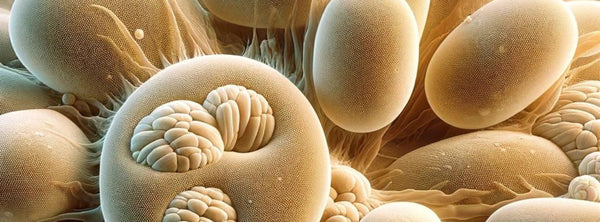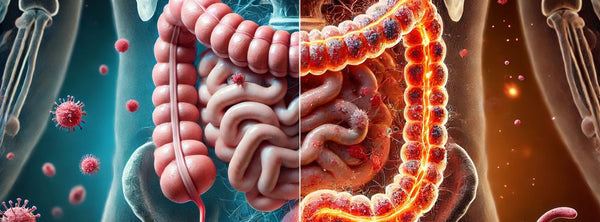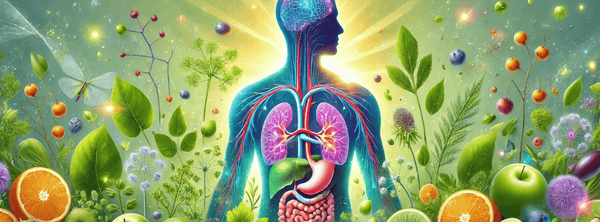
What is PMS
Premenstrual syndrome commonly known as PMS is recurring signs and symptoms that develop during the 7 to 14 days prior to a woman menstruating. Typically PMS symptoms include decreased energy, irritability, depression, headache, breast tenderness, backache, abdominal bloating and fluid retention of the breast, hands and feet. These signs and symptoms can be mild to debilitating. It is estimated that PMS affects between 30 to 40% of menstruating women with peak occurrences in women in their 30s and 40s.
PMS can be divided into four subgroups; PMS-A, PMS-C, PMS-D and PMS-H. A woman may have a number of symptoms from each subgroup and needs to treat each subgroup accordingly.
What is PMS-A
A stands for anxiety and is the most common form of premenstrual syndrome. It is associated with excessive oestrogen and prolactin with a deficiency in progesterone levels during the Luteal Phase. What should occur during this phase is that oestrogen levels decline and progesterone levels increase to help prepare the uterus and the endometrium for implantation of the foetus. Progesterone acts as an anti-anxiety hormone helping to keep us calm. GABA deficiency is also associated with PMS-A as it is the body's major tranquillising neurotransmitter and deficiencies include anxiety, panic attacks, insomnia and a racing mind. Common symptoms associated with PMS-A include anxiety, irritability, menstrual headaches and emotional instability.
What is PMS-C
C stands for carbohydrate craving and is associated with an increased appetite, sweet cravings, headaches, vertigo, dizziness, fatigue, migraines, binge eating, fainting spells and heart palpitations. Women who suffer from PMS-C seem to have an exaggerated insulin response to carbohydrates and the strong possibility of Magnesium deficiency.
What is PMS-D
D stands for depression and is the least common form of premenstrual syndrome and is rare in its pure form. These women generally have lower oestrogen to progesterone ratios, which is the reverse of PMS-A and elevated adrenal hormones in particular adrenaline and cortisol. Excess cortisol inhibits the body from producing serotonin, the body's happy feel good brain chemical. Low levels of serotonin are commonly associated with depression. Common symptoms of women suffering from PMS-D include depression, crying, forgetfulness, anger, confusion and insomnia.
What is PMS-H
H stands for hydration and is characterised by fluid retention and weight gain of greater than 1.4 kg, generally there is swelling of the hands and feet, along with breast tenderness , headaches, constipation, abdominal bloating and discomfort. PMS-H symptoms have been attributed to an increased of aldosterone and or prolactin due to elevated stress, oestrogen excess and a dopamine deficiency. Normal levels of aldosterone are essential for the kidneys to conserve sodium and water. The neurotransmitter dopamine is a natural antagonist to aldosterone. Low dopamine levels allow aldosterone to rise resulting in fluid retention by the kidneys.

Prolactin's Role in PMS
Prolactin is a hormone produced by the pituitary gland in lactating women and helps facilitate the production of breast milk. Elevated prolactin during PMS can be attributed to some key factors; stress along with Progesterone, Dopamine Vitamin B6, Zinc and Magnesium deficiencies. Stress triggers white blood cells called lymphocytes to produce prolactin. While the neurotransmitter dopamine and hormone progesterone regulate the production and levels of prolactin. Vitamin B6, zinc and magnesium are essential for the production of both dopamine and progesterone. The herb Chaste Tree or Vitex is revered amounts herbalist for it's ability to increase progesterone and dopamine thus normalising prolactin levels. Studies show that Chaste Tree does help to alleviate many of the symptoms associated with PMS. Interestingly a condition called Pyroluria or Pyrrole Disorder inhibits the body from effectively utilising zinc and vitamin B6 resulting in deficiencies, while stress depletes magnesium.
Common Causes of PMS?
While there are numerous factors that can contribute to PMS, the most common causative factors are;
| Adrenal dysfunction | Leaky Gut Syndrome |
| Depression | Nutritional Deficiencies |
| Dopamine deficiency | Opioid deficiency |
| Elevated prolactin | Progesterone deficiency |
| Excess oestrogen | Poor diet |
| Hypothyroidism | Serotonin deficiency |
| Impaired liver function | Stress |
Signs and Symptoms of PMS
| Abdominal cramps or heaviness | Fatigue |
| Abdominal fullness | Feeling gaseous |
| Abdominal pain | Food cravings |
| Acne | Headache |
| Aggressive behaviour | Hostility |
| Anxiety | Increased feelings of guilt |
| Backache | Irritability |
| Bloating | Less tolerance for noise and lights |
| Breast tenderness | Low self-esteem |
| Changes in sex drive | Muscle spasms |
| Confusion | Nausea |
| Constipation | Painful Menstruation |
| Decreased co-ordination | Panic attacks |
| Decreased self-image | Paranoia or increased fears |
| Depression | Recurring cold sores |
| Diarrhoea | Swelling of ankle, feet and hands |
| Difficulty concentrating | Weight gain |
How to Reduce PMS Symptoms
There are some well proven and useful strategies that help all women who sufferer from Premenstrual Syndrome and they include exercise, stress reducing techniques and a healthy diet.
Exercise impacts positively on PMS through the elevation of brain chemicals called endorphins. A rise in endorphins make us feel happy and like we can take on the world, they also help to lower stress, adrenalin and cortisol levels.
Stress Management plays a very important role in the treatment of PMS. When stress is extreme, unusual or long-lasting it triggers biological changes in the brain which, effects serotonin, dopamine, GABA and prolactin levels, while reducing endorphin secretion. These changes produce a domino effect that lead to alterations in normal physiology and affect the menstrual cycle.
When we are stressed our body produces excessive amount of the anti-stress hormone Cortisol. Progesterone is the precursor to cortisol and is depleted when we are under excessive stress. This leads to progesterone deficiency and a oestrogen and prolactin excess. Herbs such as Withanina, Skullcap, St John's Wort, Bacopa, Lavender and Damiana all help in various ways to reduce the toxic effects of stress on the body. We uses these herbs in our tonics to help for different types of stress. For an everyday, maintenance herbal tonic that naturally strengthens, supports and calms the nervous system recommend N S Balance. When the body is under excessive stress, cortisol levels are high and coping with daily life becomes difficult we recommend Cortisol Calm along with Be-Calm to help lower cortisol, preserve progesterone, increase GABA and sedate the nervous system.
It is important to implement various stress reducing strategies such as exercise, yoga, tai chi, meditation, stretching, changing the way you look at a stressful situation, deep breathing, alcohol reduction, a healthy diet, and doing things you love.
A Healthy Diet. It's pretty hard for the body to make progesterone or dopamine and remove excess levels of oestrogen and prolactin if it is missing an essential vitamin or mineral. So the old adage 'You are what you eat' is as meaningful today as it was 200 years ago. Food is where we get all of our vitamins, minerals, enzymes, Antioxidants and phytonutrients from. If we can't get these nutrients from our diet then our cells will starve allowing dis-ease and cellular dis-harmony to make themselves at home. So lots of fresh fruits, vegetables, lean grass fed meats, wild caught seafood, nuts and seeds, legumes and whole grains.....enjoy
Along with the basics PMS prevention strategies there are specific nutrients that may be of benefit to women suffering from a particular subtype or subtypes of PMS.
Nutrients to Help PMS-A sufferers
PMS-A sufferers benefit from Vitamin B6, Zinc, Magnesium, Chaste Tree, Grapefruit, and Calcium D Glucarate. These nutrients normalise the oestrogen to progesterone ratio. Grapefruit up regulates the Glucuronidation pathway in the liver, which is responsible for removing excess oestrogen. It is also an excellent source of Glucaric Acid the active form of Calcium D Glucarate. In addition Fibre and a high fibre diet lowers oestrogen by increasing its removal via the faeces. The ingredients in Be-Calm help to naturally increase the body's GABA levels and reduce anxiety and nervousness.
Nutrients to Help PMS-C sufferers
The carbohydrate craving PMS-C sufferers respond quite well to Magnesium, Chromium, Lipoic Acid along with Fish Oil Supplementation, all of which help to normalise the body's blood sugar and insulin levels. Herbs such as Cinnamon, Gymnema, Fenugreek Seeds and Turmeric are also quite effective in regulating blood sugar levels.
Nutrients to Help PMS-D sufferers
PMS-D sufferers respond well to the amino acid Tryptophan and / or 5HTP both of which improve serotonin levels. Either of these nutrients are best taken in the morning away from food with a little juice to enhance absorption. Herbs including St John's Wort, Withanina and Bacopa all help improve serotonin levels. A combination of these and other anti stress herbs can be found in Cortisol Calm. The super mineral Magnesium is also beneficial for PMS-D sufferers as it helps alleviate depression and supports nervous system function.
Nutrients to Help PMS-H sufferers
PMS-H sufferers respond well to Vitamin B6, Zinc, Magnesium and Evening Primrose Oil all help to decrease aldosterone levels. The amino acid Tyrosine is the precursor to dopamine, which is the antagonist to aldosterone. Chaste Tree helps to increase dopamine levels. Vitamin E reduces breast tenderness. Avoidance of salt, alcohol and coffee will help PMS-H sufferers in reducing fluid retention.

What Now?
Find yourself a competent Natural Medicine Practitioner rather than rely on the medically prescribed Pill to suppress PMS symptoms. If you have any troubles locating someone we would be happy to help and offer world wide Skype Consultations along with Phone and in Clinic Consultations for patients in Australia.
I hope you found this blog useful and if you did please leave a comment or share on social media.
Thanks and have a great day
References:
- Reid RL. Premenstrual Dysphoric Disorder (Formerly Premenstrual Syndrome) [Updated 2017 Jan 23]. In: Feingold KR, Anawalt B, Boyce A, et al., editors. Endotext [Internet]. South Dartmouth, Inc.; 2000.
- Yonkers KA, O'Brien PM, Eriksson E. Premenstrual syndrome. Lancet. 2008;371(9619):1200-1210. doi:10.1016/S0140-6736(08)60527-9
- Wurtman JJ. Carbohydrate craving, mood changes, and obesity. J Clin Psychiatry. 1988 Aug;49 Suppl:37-9. PMID: 3045110.
- Hantsoo L, Epperson CN. Premenstrual Dysphoric Disorder: Epidemiology and Treatment. Curr Psychiatry Rep. 2015;17(11):87. doi:10.1007/s11920-015-0628-3
- White CP, Hitchcock CL, Vigna YM, Prior JC. Fluid Retention over the Menstrual Cycle: 1-Year Data from the Prospective Ovulation Cohort. Obstet Gynecol Int. 2011;2011:138451. doi:10.1155/2011/138451
- Graham JJ, Harding PE, Wise PH, Berriman H. Prolactin suppression in the treatment of premenstrual syndrome. Med J Aust. 1978 Nov 4;2(3 Suppl):18-20. doi: 10.5694/j.1326-5377.1978.tb77381.x. PMID: 370525.
- Gollenberg AL, Hediger ML, Mumford SL, et al. Perceived stress and severity of perimenstrual symptoms: the BioCycle Study. J Womens Health (Larchmt). 2010;19(5):959-967. doi:10.1089/jwh.2009.1717
- Daley A. Exercise and premenstrual symptomatology: a comprehensive review. J Womens Health (Larchmt). 2009 Jun;18(6):895-9. doi: 10.1089/jwh.2008.1098. PMID: 19514832.



